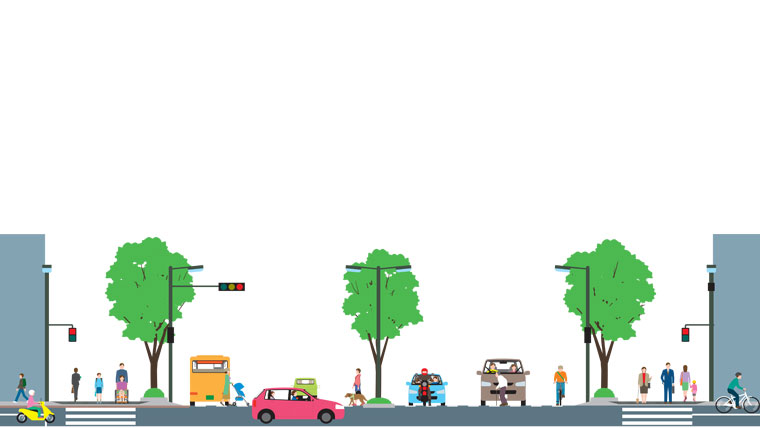Historically, the roads in many of our nation’s cities have been designed with one mode in mind – the automobile. However, as our thinking about roadway design and the critical role it plays in shaping our communities has evolved, advancing roadway designs that accommodate walking, biking, and transit has become a priority that extends well beyond safety.
Aside from the most obvious benefit of saving lives, there are many more direct and indirect benefits to safe and accessible multimodal streets:
- Crash reduction – fewer collisions results in less cost, fewer injuries, and fewer fatalities.
- Sustainability – fewer vehicle miles equates to a smaller carbon footprint.
- Livability – less asphalt and emissions and greater green space enhances the pleasantness of the public realm.
- Equity – increased accessibility for lower income, differently abled, and otherwise marginalized populations to reach more opportunities.
- Economic development – multimodal streets lead to greater foot traffic, higher business sales, and increased property values.
- Public health – multimodal streets provide greater space for outdoor dining, games, recreation, and events to bring communities together.
- Mobility – multimodal streets move more people than cars alone.
Our team at Mead & Hunt appreciates the value these benefits bring to communities. We approach street design from a modally balanced perspective, applying good engineering judgement and best practices to enhance safety and prioritize non-auto modes. Typical guidance we follow includes:
- Provide transit priory on streets with high frequency service (e.g. 10 minutes or less headways or > 20 buses per hour).
- Provide controlled or reduced exposure for pedestrian crossings at reasonable distances in high pedestrian areas, or around special generators such as schools, religious institutions, community facilities, etc. using Rectangular Rapid Flash Beacons (RRFB), High-Intensity Activated Crosswalk (HAWK) beacons, or refuge islands.
- Provide high-quality bicycle infrastructure on designated bike routes such as protected or buffered bike lanes, bike walks, and bicycle boxes.
- Provide traffic calming treatments such as reduced curb radii to slow vehicle speeds and removing channelized turns to smooth traffic flow.
- Implement multimodal signal timing such as advanced walk phases, leading pedestrian and bike intervals, no turn on red signs, and transit signal priority to further balance modal flows and enhance roadway safety.
Mead & Hunt has been a leader in urban multimodal street design for decades and has written best practices guidelines for pedestrian safety and accessibility for State Departments of Transportation and the Federal Highway Administration (FHWA). When planning and designing urban street retrofits, reducing vehicle speed and providing greater accessibility for non-vehicular modes is a difficult and sometimes more expensive choice. Increased safety is alone worth the cost, but it is also important to recognize and appreciate the additional benefits to public health, community equity, and economic development.



